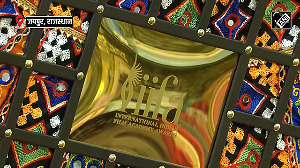The allocation of scarce spectrum for mobile operators has resulted in a battle with the Tatas on the one hand, demanding that operators pay for the spectrum, and other operators who want spectrum to be allocated on the basis of the time-tested formula - number of subscribers.
But how many mobile subscribers does India currently have - around 90 million?
The US-based Yankee Group report disagrees. It states that Indian operators, especially those in the GSM space, might have to eliminate 10-20 per cent of their subscriber numbers over the next two to three years to wean away a growing base of technically non-existent users.
It cites the cases of countries like Portugal and Taiwan where high pre-paid ratios and multiple SIM cards created a non-existent customer base.
The report in collaboration with the Confederation of Indian Industry brings about the imbalance based on relationship between handset sales and increase in subscriber numbers.
In the fourth quarter of 2005, the report estimates that around 10 million mobile devices were sold in India. This is much below the 12 million net addition of subscribers that were reported by operators.
Telecom experts who favour the Tata argument say various factors could increase the gap - the free incoming-for-life scheme, the easy TRAI norms on definition when a subscriber should be moved off, and the large grace period given to pre-paid customers to recharge their mobile numbers.
The Cellular Operators Association, however, rubbishes the report (even though the chairman of the report is none other than Asim Ghosh, a key GSM operator and COAI member).
It says that 32 million handsets were sold in India between January-December 2005. The number of subscribers was more or less the same. Between April 2005 and March 2006, the number of handsets sold was around 37 million again matching additions to the subscriber base.
Says T V Ramachandran, director-general, COAI: "The figures on handsets clearly states there is no gap as Yankee has suggested."
The Yankee reports also gives insights into the size of the Indian 3G (third generation) market. It forecasts that by 2010, there would be over 21.3 million 3G users in the country, which constitutes for over 11 per cent of the mobile population.
However, it will constitute for over 23 per cent of the mobile revenues - because ARPUs (average revenue per user) are expected to be over three times more than in 2G initially.
However, 3G adoption will progress at a much faster rate in India compared to Europe, Hong Kong and Australia.
There will, however, not be any extensive roll out of 3G in rural India at least for the next four years considering the relatively-high prices of 3G handsets, the higher cost of rural deployment and the fact that 2G coverage is currently limited to about a third of the country's population.
The Yankee report adds that in the next two years, India will overtake Japan to become the third largest mobile market in the world after China and the US. It expects mobile users to hit 201 million by 2010.






 © 2025
© 2025